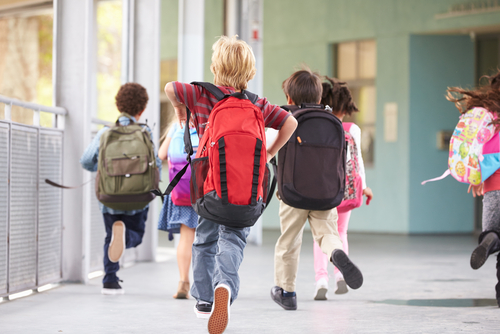As the country enters the 2021-2022 school year amid a lingering pandemic, the U.S. Department of Education (DOE) has highlighted key strategies for improving ventilation in schools and institutions of higher education (IHEs), such as colleges and universities, to help prevent COVID-19 and maintain a safe environment for in-person learning.

The DOE calls clean air “essential” for health and an “important part of COVID-19 prevention,” noting that “even before the pandemic, some schools, colleges, and universities had indoor air quality (IAQ) challenges” leaders worked to address over the past year. According to recent studies, the pandemic has made IAQ a top concern for parents, students, teachers, and other members of the community.
Citing current recommendations by the Center for Disease Control and Prevention (CDC) and the Environmental Protection Agency (EPA), the DOE outlines the following six strategies for schools and IHEs to improve ventilation:
1. Bring in as Much Outdoor Air as Possible
- Open windows wherever it is safe to do so, including in classrooms and on school buses and other transportation. Where safe, opening doors can also improve airflow. Using child-safe fans in accordance with CDC guidance increases the impact of open windows and doors.
- Hold classes, activities, and meals outdoors when safe and feasible.
2. Use Heating, Ventilation, and Air Conditioning (HVAC) Settings to Maximize Ventilation
- Service or upgrade HVAC systems consistent with current industry standards.
- Set systems to bring in as much outdoor air as the system can safely support, including for 2 hours before and after occupancy.
- Reduce or eliminate air recirculation in consultation with an HVAC expert.
- Disable demand-controlled ventilation controls. In classrooms or buildings controlled at the thermostat, set the fan to the “on” position instead of “auto,” which will operate the fan continuously, even when heating or air conditioning is not required.
- Use a scheduled inspection and maintenance program for HVAC systems to allow repair, modification, or replacement of equipment.
- In consultation with HVAC experts and health officials, consider changing HVAC system filters more often than recommended by normal maintenance requirements.
3. Check Exhaust Fans
- Ensure exhaust fans in restrooms and kitchens are working properly, and use them during occupancy and for 2 hours afterward to remove particles from the air. Keep all fans and filters clean to maximize airflow.
4. Filter and/or Clean the Air
- Upgrade HVAC filters to minimum efficiency reporting value (MERV)-13, or the highest MERV rating a building’s ventilation system can accommodate to improve air filtration as much as possible without significantly reducing airflow.
- Ensure HVAC filters are sized, installed, and replaced at least as frequently as according to the manufacturer’s instructions.
- Consider using portable air cleaners that use filtration technology, such as high-efficiency particulate air (HEPA) filters. The DOE says a July 2021 CDC report shows that HEPA filters can reduce exposure to the virus that causes COVID-19, particularly in combination with universal and correct mask wearing. Select air cleaners of appropriate capacity for the space in which they will operate. Portable air cleaners can go in any room of a school building to serve as an additional safety and mitigation layer, including in areas where airflow may be limited and/or in areas where sick individuals may be present, such as a nurse’s office or sick/isolation room.
- The CDC and EPA offer valuable guidance on the selection of portable air cleaners. CDC guidance on ventilation in the home, for example, may be relevant for residential dormitories. Caution: Some products sold as air cleaners intentionally generate ozone and are not safe to use when people are present. Consumers should assess any claims about air disinfection devices to determine whether they have been tested in similar conditions to those where they would be used, including in schools, colleges, and universities.
5. Consider the Use of Portable Carbon Dioxide (CO2) Monitors
- Portable CO2 monitors can help verify how well air is circulating in classrooms and other spaces. School maintenance professionals may also use air flow capture hoods, anemometers, and qualitative tracer techniques to assess airflow. Additional information on using portable CO2 monitors is available in the CDC Ventilation FAQ related to CO2 monitors.
6. Communicate and Educate
- Communicate clearly to school communities, parents, students, faculty, and staff, in a language they can understand and in accessible formats, including on district, school, college, or university webpages, how you are assessing and improving ventilation. For example, some districts have performed school building ventilation walk-throughs with community leaders to assess needs and share results and plans for how to improve ventilation. Walking through school or IHE buildings with custodial engineers, parent leaders, teacher or faculty leaders, students, and others is one way to educate your community on how ventilation works within your educational spaces and assess ways that you can target upgrades and updates. Some districts and school leaders have created videos touring the ventilation systems of school buildings and explaining the strategies deployed for effective ventilation in plain language to parents so they understand the school’s approach. In all cases, school leaders can share the ways rooms have been prepared to maximize air flow for in-person learning.
